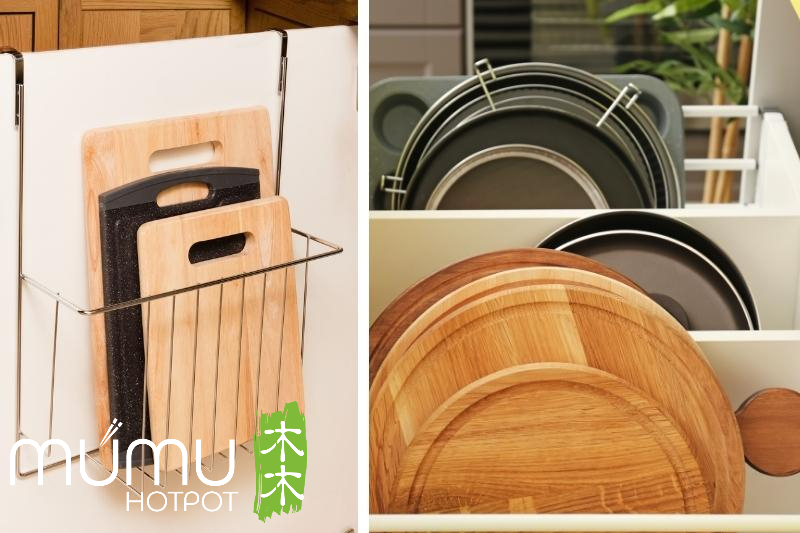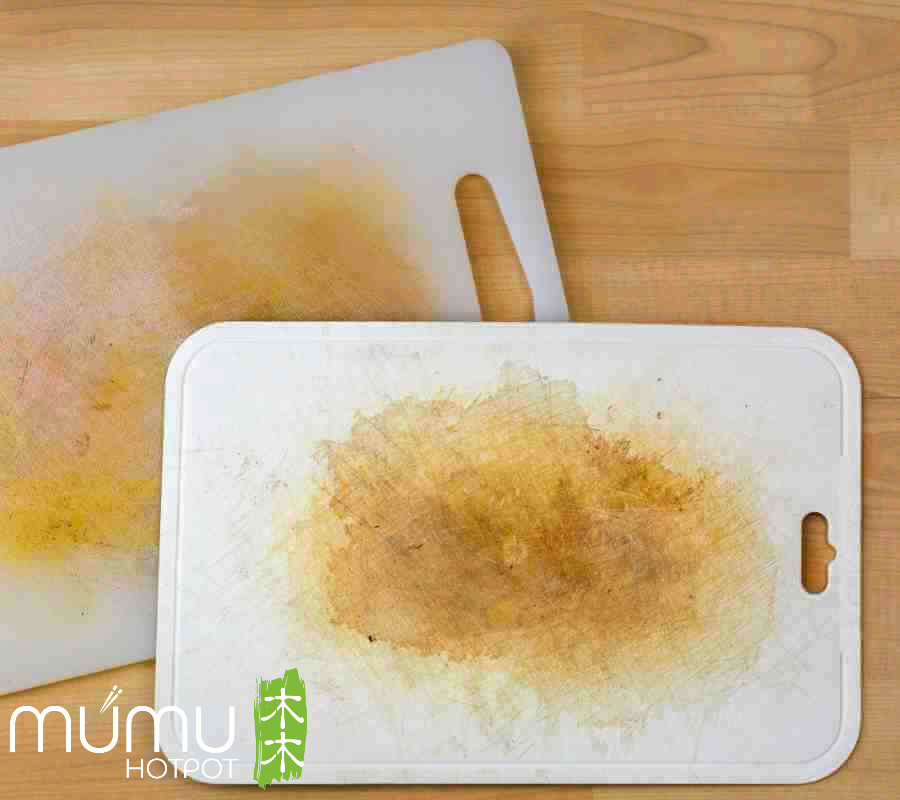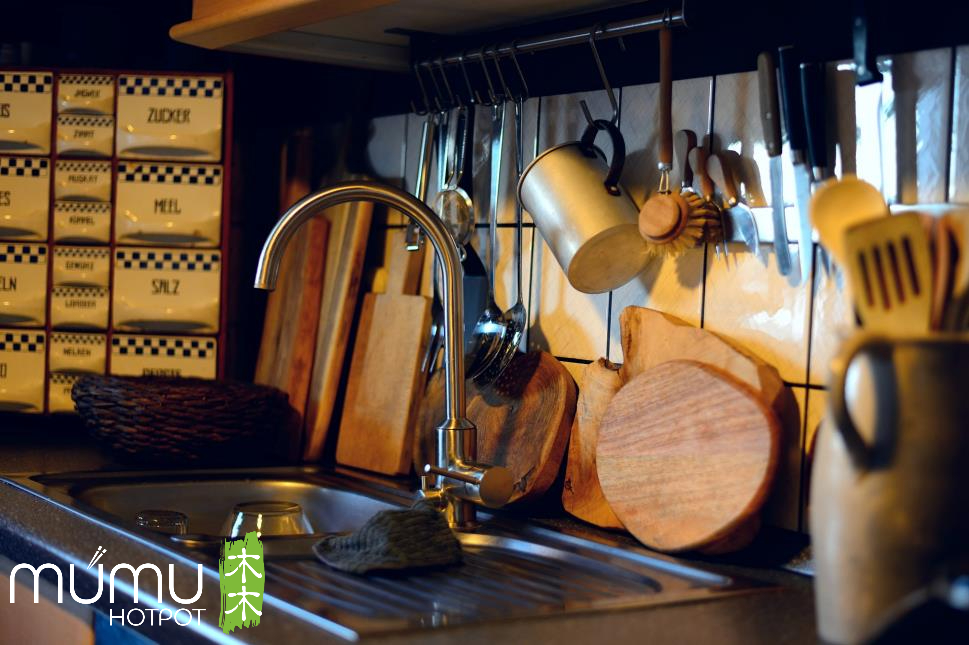How to Store Cutting Board: Smart Solutions for Space
Cutting boards are an essential tool in any kitchen. Whether you're preparing fruits, vegetables, or meat, a good cutting board can make all the difference. But when it comes to storing your cutting board, many people don't give it much thought. However, proper storage is important for maintaining the quality and cleanliness of your cutting board.
In this buying guide, we will discuss why you should store your cutting board properly and how to do it. We will also cover when you should replace your cutting board and answer some frequently asked questions.
Why Should You Store Cutting Board?
Storing your cutting board properly is crucial for several reasons:
1. Prevents Cross-Contamination
If you store your cutting board improperly, it can become a breeding ground for bacteria and other harmful pathogens. This can happen if you store your cutting board near raw meats or other contaminated surfaces. By storing your cutting board properly, you can prevent cross-contamination and protect your family's health.
2. Prolongs the Life of Your Cutting Board
Proper storage can also help prolong the life of your cutting board. Storing your cutting board in a cool, dry place can prevent warping, cracking, and other damage that can occur over time.
3. Saves Space
Storing your cutting board properly can also save space in your kitchen. By using creative storage solutions, you can keep your cutting board out of the way while still keeping it easily accessible.

How to Store Cutting Board?
Here are some tips on how to store cutting board properly:
1. Clean Your Cutting Board
Before storing your cutting board, it's important to clean it thoroughly. Use hot, soapy water and a brush to scrub the surface of the board, paying special attention to any grooves or crevices. Rinse the board well with hot water and dry it completely with a clean towel.
2. Store Your Cutting Board Vertically
Storing your cutting board vertically is a great way to save space and keep it easily accessible. You can use a knife block, a wall-mounted rack, or even an old magazine holder to store your cutting board upright.
3. Store Your Cutting Board Flat
If you don't have space to store your cutting board vertically, you can also store it flat. Just make sure it's completely dry before placing it in a cabinet or drawer. You can also protect your cutting board by placing it in a cloth or plastic bag before storing it.
4. Keep Your Cutting Board Separate
It's important to keep your cutting board separate from other kitchen tools, especially those used for raw meats or other contaminated surfaces. You can use a separate drawer or cabinet for your cutting board, or even store it in a separate room if possible.
5. Rotate Your Cutting Boards
If you have multiple cutting boards, it's a good idea to rotate them regularly. This will prevent any one board from becoming worn or damaged over time. It also gives you the opportunity to clean and sanitize each board thoroughly before using it again.
Read more: How To Clean Plastic Cutting Board

When Should You Replace Your Cutting Board?
Even with proper storage and care, cutting boards will eventually need to be replaced. Here are some signs that it's time to replace your cutting board:
1. Deep Cuts or Grooves
If your cutting board has deep cuts or grooves that cannot be sanded out, it's time to replace it. These crevices can harbor bacteria and other harmful pathogens, making your cutting board unsafe to use.
2. Cracks or Warping
Cracks and warping can also be signs that your cutting board needs to be replaced. These issues can compromise the structural integrity of the board, making it more likely to break or splinter over time.
3. Discoloration or Stains
If your cutting board has deep, stubborn stains or discoloration that cannot be removed with cleaning, it's time to replace it. These stains can also be a sign of bacteria growth or other contamination.
Read more: How to Seal Cutting Board

FAQs
Q: Can I store my cutting board in the refrigerator?
A: It's not recommended to store your cutting board in the refrigerator, as this can cause warping and other damage. Instead, store your cutting board in a cool, dry place.
Q: Do I need to oil my cutting board before storing it?
A: It's not necessary to oil your cutting board every time you store it. However, if your cutting board looks dry or dull, you can apply a thin coat of food-grade mineral oil to protect the surface.
Q: Can I put my cutting board in the dishwasher?
A: It's not recommended to put your cutting board in the dishwasher, as this can cause warping and other damage. Instead, clean your cutting board by hand with hot, soapy water.
Conclusion
Storing your cutting board properly is an important part of maintaining its quality and cleanliness. By following the tips outlined in this blog post, you can prevent cross-contamination, prolong the life of your cutting board, and save space in your kitchen. Remember to clean your cutting board thoroughly before storing it, and keep it separate from other kitchen tools. And if your cutting board shows signs of wear or damage, don't hesitate to replace it.
Overall, proper storage is just one aspect of caring for your cutting board. With regular cleaning and maintenance, you can keep your cutting board in top condition for years to come.
Follow Mumu Hot Pot for more additional instructions.




